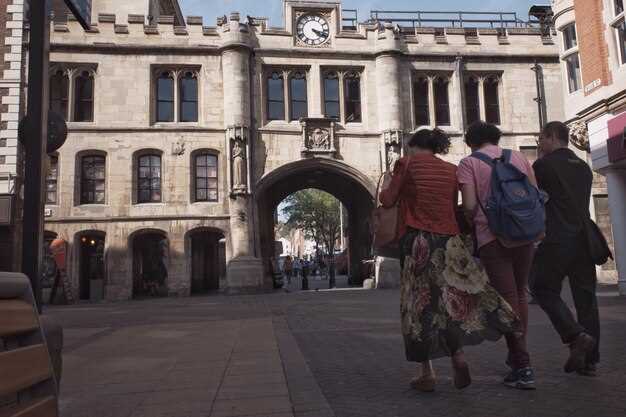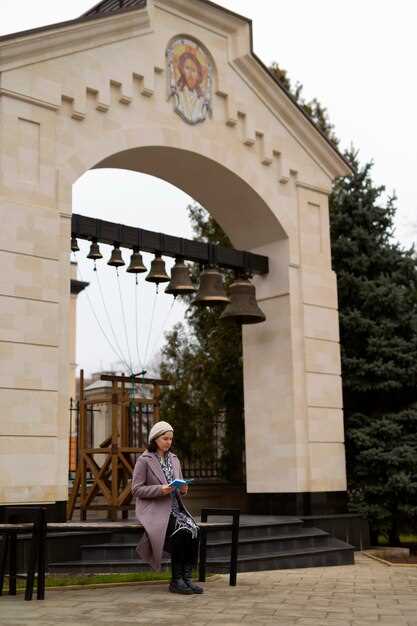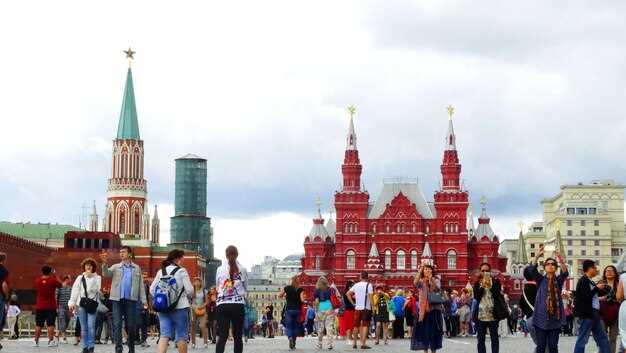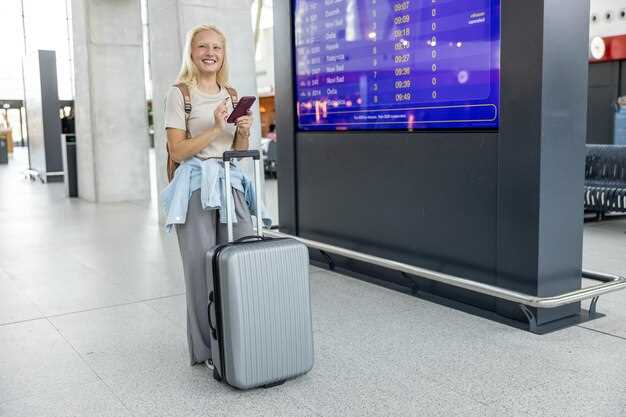Recommendation: Exchange at banks or official exchange points to ensure transparent rates and receipts; this directly protects them and makes your payments traceable. I recommend avoiding street exchangers for safety and rate stability.
Best places are large banks with currency desks–Sberbank, VTB, Gazprombank–where daily rates are posted and a formal ticket is issued for your records. For speed, official desks at airports and major train stations are convenient, but margins can be higher; always compare at least two points before exchanging.
Rates and margins: cash exchanges at banks commonly carry a small markup over the interbank reference; transactions in cash can be expensive compared with card payments or bank transfers. Check the daily rate on the screen and ask for a printed quote to avoid surprises.
Preparation: bring your passport, know the amount you need, and keep the ticket and receipt as proof of transactions. If a rate looks too high, move to another desk; these prepared travelers avoid overpaying and can back their choice with online checks.
Tips for safer exchanges: avoid street kiosks and other expensive private offices; use official points and banks to ensure secure payments. Verify the daily rate and total in rubles before signing the ticket. This wise approach aligns with common sense and helps you have enough funds for daily needs. Additionally, always keep a backup plan in case a desk closes early.
Additionally, in major cities you’ll find numerous exchange desks; compare at least three places per day to maximize your rate. These efforts ensure you get a fair deal without overpaying. If you travel with european cards, confirm that your issuer supports cash transactions in rubles to avoid unexpected payments.
Best places to exchange money in Russia in 2025
Use official banks or licensed currency offices for the best rates and reliable service. Bring your passport and compare two or three desks before you convert.
Here are the best options you’ll find widely across cities, airports, and hotels:
- Official banks – Sberbank, VTB, Alfa-Bank, and Rossiya operate cash desks in city centers and major shopping areas. Rates update hourly; commissions typically range from 0 to 2%. Banks also offer withdrawal of rubles with cards; bring your card, PIN, and your passport. In cities like Moscow and Saint Petersburg, you’ll find branches between metro stations and hotels.
- Licensed currency exchanges – look for signs reading “Obmen Valyut” with a licensed logo. These desks sit on main streets in business districts and near transport hubs. Expect a small markup (often under 2%), and always ask for the total amount and the rate before confirming. Bringing small notes in good condition helps; avoid unsigned or torn bills.
- Airport desks – major airports (Sheremetyevo, Domodedovo, Pulkovo, Vnukovo) host official desks with competitive rates, but margins can be higher than banks. If you must exchange there, do it for a small amount; plan to withdraw additional cash at a bank later. At border routes and in transit hubs, rates may vary; check the display boards.
- Post offices – some post offices offer currency exchange services in large cities. They can be convenient for quick exchanges, but rates may be less favorable than banks; compare before you commit.
- Hotels and tourist streets – hotels often provide a desk or concierge service. Rates are convenient for last-minute needs, but the spread is usually wider; bring cash in advance or use a trusted bank desk to avoid surprises.
- ATMs – you can withdraw rubles directly; use ATMs in bank premises or inside shopping centers to minimize fees. Check your card network’s withdrawal limits and possible international fees; use a card that you trust and keep receipts.
- Avoid street merchants – yellow signs and stall desks can advertise fast cash, but the risk of counterfeit notes and poor rates is high. Stick to official desks and licensed operators.
- Regional notes – in ossetia and similar regions, you’ll still find official desks in major towns; carry extra local currency if you’re moving across smaller routes. If you are coming from donetsk or other border-adjacent areas, exchange at the official desks first and keep most cash in your carry-on to avoid trouble.
What to bring and how to manage cash: carry no more than you need for daily expenses; bring a mix of small and larger bills; count the rubles before leaving the desk; keep receipts. If you’re unsure, ask for a printed rate sheet or a board showing the base rate and any markup; ask to see both buy and sell rates and confirm the amount you will receive. Be aware of the local currency conditions and avoid exchanging at dubious stalls; official desks publish their rates and are more widely trusted. In 2025, stay aware of rate changes and compare boards at official desks.
Bank branches, licensed exchange offices, and ATMs: where to get fair rates
Begin with a bank branch for the fairest rates. Check the table of rates posted at the counter; banks price ruble exchanges close to the interbank reference when you buy cash. In moscows, branches of Sberbank and VTB offer clear quotes, receipts issued on the spot, and no surprises in the total.
Licensed exchange offices are a flexible option. Seek desks with a visible license issued by the regulator and compare the rate before handing over euros or dollars. These desks often live inside bank offices or government-backed centers, with a rate board and a printed table showing buying and selling values. For european tourists and british visitors, quotes tend to be fair, though the spread can vary by location.
ATMs provide quick access to cash. Use your card to withdraw rubles and choose the local currency option without dynamic conversion. Watch the screen for any withdrawal fee and check your bank app for the amount charged. In moscows, ATMs from major banks usually offer low fees, while in provincial areas the fee can be higher. If you plan to buy plane tickets or visit an attraction, having rubles on hand helps at kiosks and transit points.
Special cases near border areas such as donetsk and ossetia may have less stable service. Plan ahead and rely on offices in well-traveled districts. Apps from banks help compare rates and track issued receipts. Use cards sparingly at shops that accept only rubles; keep receipts handy for reference. Hotels and shopping centers typically host safer machines, but fees on withdrawals can add up. This approach helps tourists from european and british alike to obtain fair ruble exchanges.
Base your plan on a table and use a mix of channels: bank branches for the base rate, licensed offices for flexibility, and ATMs for cash on demand. Rates are based on interbank values, with small differences by city. In moscows and other big hubs, you will find several options, while in outlying areas the choice narrows. This method suits travelers who arrive with euros or dollars and need ruble for hotels, tickets, and everyday needs.
Airport vs city centers: pros, cons, and expected rate differences
Recommendation: exchange most cash at city-center branches for better rates; airport desks should be reserved for an immediate cash need. Here, travelers typically find mid-range rates at central branches, therefore plan ahead to maximize value. If you must use the airport, compare the posted rate before you make the transaction and avoid carrying all your funds through security checks.
Airport pros: quick access on arrival, predictable locations inside major terminals, and longer hours at some hubs. These advantages help individuals who arrive late or need cash right away, especially when you’re carrying only a small amount for immediate payments or border crossings.
Airport cons: higher spreads and fewer payment methods, which can push the effective rate unfavorably for the same currency. In practice, these transactions often come with a premium to cover convenience, overhead, and the risk of queue pressure during peak times, so you should expect less favorable rates than in a center branch.
Rate differences and situation notes: on average, airport rates sit about 0.5%–2% worse than city-center branches, with larger airports sometimes widening the gap further. In border areas or regional routes near places like donetsk or ossetia, there can be additional checks and regulatory steps that affect availability and timing, making the center more reliable if you want to avoid delays and surprises everywhere.
Practical advice: do at least two checks–compare rates at 2–3 branches in the city center and a nearby airport kiosk. Once you confirm a favorable rate, proceed with a straightforward, transparent payment, and keep the receipt for your records. For longer trips or multiple transactions, prioritize center branches to minimize the total cost, especially if you’re traveling with tourist groups or planning visits to multiple towns. If a center branch is out of reach, consider an official bank or well-known exchange network, and avoid street exchanges to reduce the risk of unfavorable rate changes or fake offers.
Reading quotes: understanding rate, commissions, and currency margins
Get a full quote that lists base rate, margin, and fixed commissions, and calculate the all-in rate before you handle any cash. When getting euros or dollars into rubles, this prepared approach helps you understand what you’re getting and reduces surprises in any dealing with merchants.
Ask for a breakdown: base rate, percentage margin, and fixed fee. If a vendor refuses to disclose parts, consider walking away. Using a few outlets everywhere helps you compare, and it forces merchants to show their actual costs.
Example A: base rate 102.40 RUB per EUR, margin 2.0%, fixed fee 0. Result: 102.40 × 1.02 = 104.45 RUB per EUR.
Example B: base rate 101.90 RUB per EUR, margin 1.5%, fixed fee 12 RUB. Result: 101.90 × 1.015 + 12 = 115.43 RUB per EUR.
Note how a small margin difference can be erased by a fixed fee: look at all-in numbers, not just base rates. When you deal with several outlets, the choice could shift significantly based on a hidden surcharge.
Wise approach: compare at least three quotes from sber branches, reputable vendors, and independent merchants. If you’re prepared to exchange often, discuss cooperation opportunities or loyalty terms; some merchants provide support or better terms for regular customers. Theyre more likely to offer a favorable all-in rate when you show you understand the math and you’re prepared.
Carrying less cash onward lowers risk, and it helps you keep dealing options flexible. If you want to reduce margins, consider an alternative: withdrawing rubles from an ATM or using a card for purchases with a known foreign-exchange fee instead of a cash exchange with high margins. In busy areas near Pushkin, you will find both licensed offices and casual vendors; compare their quotes carefully before you commit. Advice: always require a clear breakdown, and never accept a single figure on a sign.
Safety first: avoiding scams and counterfeit rubles
Always exchange cash at official banks or licensed kiosks; refuse offers from strangers or street exchangers. If a rate looks unusually favorable, back away and verify at a bank counter or by contacting the center.
- Choose trusted venues: sber branches, large banks, or official desks inside airports and major stations; check for a license and clear signage; in petersburg and surrounding centers these desks are common and safer in crowded tourist areas.
- Inspect received banknotes: check banknote materials, watermark portrait, security thread, and color-shifting ink; rub the surface to feel the raised print; if notes feel off or look fake, theyre likely counterfeit; ask for a recheck to confirm they are real.
- Count amounts in a bright, quiet spot and verify serial numbers; keep receipts and tally as you hand over cash; avoid exchanging large amounts in crowded or informal settings.
- Ask for the rate quote in writing and request a cash-in-hand receipt; a legitimate desk provides a clear quote and a record you can save for your records.
- If you suspect counterfeit, inform the cashier and pause the transaction; move to a safe area and consider contacting the official hotline or bank center for guidance; these steps protect you and other participants.
- Avoid night exchanges in unsecured locations; if you must exchange after dark, choose a bank branch or a well-lit desk inside a station or mall with staff present and CCTV.
- Protect yourself by dividing cash and keeping most of it in a secure place; for larger sums, use a bank envelope and complete the exchange at a safe venue; prefer cashless options whenever possible to save risk.
In petersburg and the Pushkin area, note that some notes depict well-known figures such as Pushkin; stay vigilant for mismatched features and report any doubts to official sources. These practical steps significantly reduce your risk of accepting fake rubles.
For travelers south of the city center, stay extra vigilant and remember to inform the cashier if anything seems off. Taking these measures helps you find real notes more reliably and keeps your cash safer during exchanges.
источник: author notes and center materials
Do you tip in Russia? Practical guidelines for service tips
Yes. Tip for good service, using cash in rubles, and keep small denominations ready; cash is almost always safer than relying on card tips, and you should plan to pay based on the level of service you receive.
At restaurants, the standard is 10-15% of the bill, unless a service charge is clearly included. If the service is modest, 5-10% or a simple round-up works well. For exceptional service, 15-20% is appreciated, but only when you see clear value. Always check the bill for a service charge across larger establishments; if it’s listed, you can adjust down the tip accordingly.
In casual cafes and bars, rounding up to the nearest 50–100 rubles or leaving a small extra (5-10% of the bill) is common. For single-item tickets or small purchases, a few extra rubles can smooth the interaction and prevent awkwardness.
Hotels expect tips for porters and housekeeping; 100–200 rubles per bag to the porter is typical, and 200–300 rubles per night for housekeeping is reasonable in mid-range hotels. In higher-end properties, you may add a little more, but keep it discreet and prepared.
Taxi drivers usually prefer cash tips; round up the fare or add 50–100 rubles if service was helpful or the ride involved special assistance or longer distances. If the fare is paid by card, tipping in cash is safer, and it helps the driver avoid card processing limitations. Always keep a few small notes to simplify the process.
Tour guides and drivers benefit from tips that reflect the quality and length of the service. For a half-day tour, 200–500 rubles per person is common; for a full-day excursion, 500–1000 rubles per person is appropriate. If the price already includes a guide, a tip equals 5–10% of the total cost when permitted, or a flat amount if that’s the usual practice across the establishment.
Travelers should distribute tips across days rather than loading a single payment at the end; this helps staff feel acknowledged during an entire stay. When arriving in a new city, prep a small plan for tipping at arrival day and subsequent services to minimize confusion and to keep amounts consistent across encounters. Foreigner groups should keep tips simple and transparent, and avoid over-tipping in any one place to maintain fairness across the board.
Donetsk or other regional backgrounds do not change the local norms, but they may influence comfort with cash handling; as a rule, they should be prepared to tip in rubles and to carry currency in small notes. They should also be aware that some venues in tourist zones accept checks or receipts for tipping, while others expect direct payment to the service staff. The goal is to have a safe, clear approach that you can apply across establishments and days of travel.
To manage tips smoothly, carry a small stash of currency, keep tips separate from the main bill, and avoid tagging a tip onto the bill if it makes the process awkward. In most establishments, staff appreciate a tip paid directly to them or placed on the table with the check, which avoids any misunderstanding about the amount you intended to give.
| Scenario | Tip range (rubles) | Notes |
|---|---|---|
| Restaurant – casual | 50–100 | Round up or add 5–10% for good service; cash preferred |
| Restaurant – full service | 100–300 | 10–15% of bill; check for service charge |
| Cafe/bar | 50–100 | Round up; keep small notes handy |
| Hotel porter | 100–200 per bag | Direct handoff to staff |
| Housekeeping | 200–300 per night | Leave daily or at end of stay |
| Taxi (city) | 50–100 | Round up; cash is safer if possible |
| Tour guide (half day) | 200–500 | Per person; adjust for group size |
| Tour guide (full day) | 500–1000 | Per person; or 5–10% of total price if included |

 Where to Exchange Euros or Dollars for Rubles in Russia in 2025 – Best Places, Rates, and Tips">
Where to Exchange Euros or Dollars for Rubles in Russia in 2025 – Best Places, Rates, and Tips">

 Tverskaya Street and 5 Nizhnyaya Street – Moscow Street Guide">
Tverskaya Street and 5 Nizhnyaya Street – Moscow Street Guide">
 Your JavaScript Is Disabled – Quick Fixes to Enable It">
Your JavaScript Is Disabled – Quick Fixes to Enable It">
 Moscow Kremlin – History, Architecture, and Visitor Guide">
Moscow Kremlin – History, Architecture, and Visitor Guide">
 Your Complete Guide to the State Historical Museum’s Building Branches in Moscow">
Your Complete Guide to the State Historical Museum’s Building Branches in Moscow">
 Kazan Cathedral – History, Architecture, and Visiting Guide">
Kazan Cathedral – History, Architecture, and Visiting Guide">
 Moscow City Pass – Save on Top Moscow Attractions, Museums & Tours">
Moscow City Pass – Save on Top Moscow Attractions, Museums & Tours">
 Novodevichy Convent and Cemetery – One of My Favorite Places in Moscow">
Novodevichy Convent and Cemetery – One of My Favorite Places in Moscow">
 Moscow Vnukovo International Airport VKO – Flights, Terminal Guide, and Travel Tips">
Moscow Vnukovo International Airport VKO – Flights, Terminal Guide, and Travel Tips">